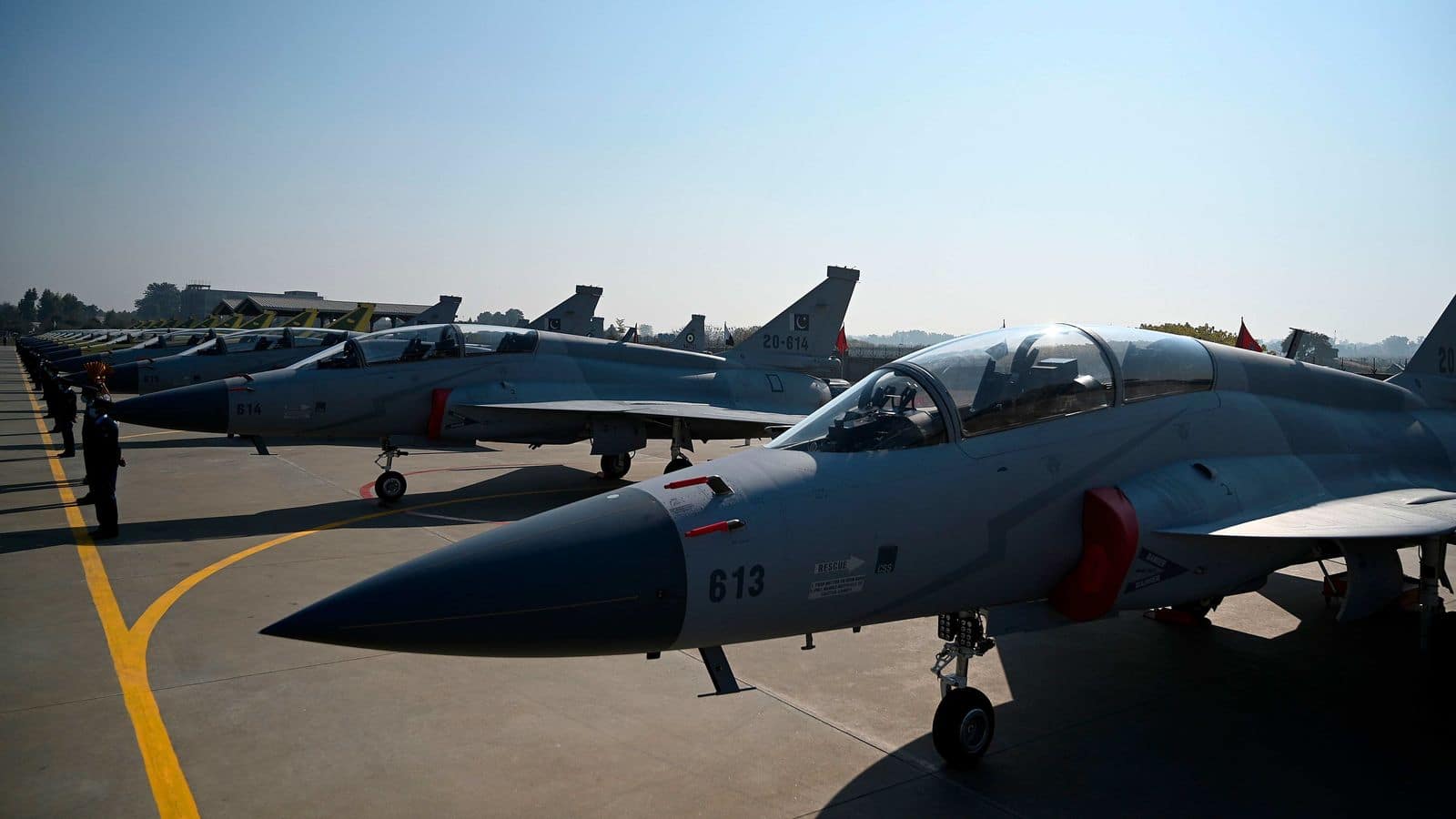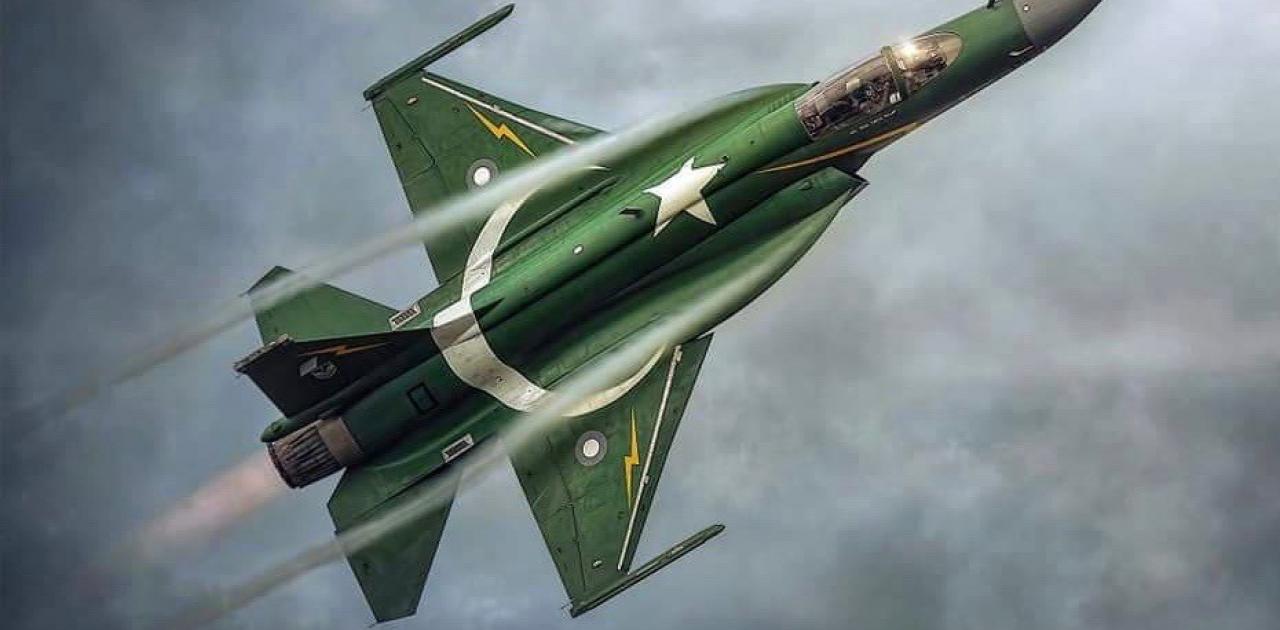Why is Pakistan's JF-17 fighter a failure
The aircraft is far from its conceived capabilities as it is a low cost fighter developed with low quality Chinese avionics and weapons
In 1999, Pakistan and China signed an agreement to jointly develop and produce the JF-17 "Thunder" and equally share the development cost. The JF-17 was planned to be a low cost, light-weight, all-weather multi-role fighter with a Chinese airframe, equipped with Western avionics and powered by the Russian Klimov RD 93 aeroengine. Pakistan envisaged a fighter aircraft comparable to the Su-30MKI, Mig-29 and Mirage-2000. China even stated that it would induct the aircraft due to its superior capabilities. However, the aircraft is far from its conceived capabilities as it is a low cost fighter developed with low quality Chinese avionics and weapons. PAF has found that the Operations and Maintenance cost of JF-17 aircraft is very high as compared to modern weapon systems and needs to be reduced to make operations more cost effective. China, Pakistan's all weather friend, having spent a significant amount of money on developing the fighter, most probably forced Pakistan to accept Chinese avionics to offset some of its development costs.
Pakistan Aeronautical Complex (PAC), Kamra is supposed to have a 58% share in production, but this is far from reality. Kamra procures raw material and production kits of important systems from China and assembles the JF-17 at Aircraft Manufacturing Factory, Kamra. PAC only manufactures some sub-assemblies like the wings, front fuselage and tail with material once again imported from China. While most of the systems are Chinese, South African and European, the ejection seat is from Martin Baker (UK). Therefore, it is fit to call PAC Kamra, a subassembly line which integrates all these components onto a full metal semi-monocoque airframe, which too mostly is manufactured in CAIC, China.
Since its operational induction in 2009, PAF has inducted more than 115 aircraft. The much awaited dual seat trainer aircraft has also been manufactured and recently inducted ceremoniously in December 2020. The induction ceremony was a mere formality as most of the trainer aircraft are unserviceable. There are five operational JF-17 squadrons and a Flight at Combat Commanders' School, which PAF overstates as the sixth squadron. Possibly a seventh training squadron would have been formed with the induction of the trainer version. The aircraft is available in two Blocks or variants. A third Block, which is supposed to be more advanced with better avionics and AESA radar, is still under development.
A modern fighter requires having reliable systems on board with minimal maintenance problems. The aircraft's capability is judged by the avionics, weapons and engine equipping it and the JF-17 fails to hit the mark in most areas. This was amply displayed on 27 Feb 19, during its poor performance against Indian Air Force Mirage-2000 and SU-30s, during an attempted retaliation to IAF targeting a Pakistani terrorist establishment. In the Air Defence role, it indigenous Link-17 data link is not only unreliable; it does not have sufficient data transfer rate and can never be integrated with the F-16 fighter's Link-16 to give the aircraft true interoperability capability. The "Thunder" does not have even an effective BVR or Airborne Interception radar. While touted to be the next best PAF fighter after the F-16, its unremarkable low endurance, poor accuracy and low weapon carrying capability were amply demonstrated on 27 February 2019, with all its Range Extension Kit (REK) bombs failing to hit the target in the face of effective jamming and attacks by Indian fighters. This has been publicly accepted by its politicians recently and PAF's lame excuse of the REK bombs being a token response without intent of causing casualties is hard to believe.
The heart of the JF-17 avionics is the KLJ-7 Al radar and Weapon Mission Management Computer (WMMC). Both systems are fraught with problems. KLJ-7 radar has multiple modes, but exhibits degraded behaviour and experiences several operational and maintenance problems since the beginning of the JF-17 project. Despite Nanjing Research Institute of Electronics Technology forwarding recommendations for its improvement, the radar continues to experience high failure rates. The WMMC has limited capacity and a high failure rate of a number of its modules, including the Main Computer module. Malfunction of the WMMC has caused Launch Zones of Beyond Visual Range air-to-air missiles to shrink during combat exercises. Due to its unreliability, PAC is now attempting to indigenise the WMMCs. The weapon load that the aircraft can carry is also not remarkable. Its integral 23 mm Gun initially experienced gun stoppages in the air and now has problems with the 23 mm round bursting. Other than the Chinese SD-10 BVR, REK and C-802AK ant-ship missile, the aircraft carries the normal weapon load of a MiG-21. Efforts to integrate the aircraft with other Chinese weapons are in progress, but with limited success.
One of the main reasons for JF-17's dismal performance is because the aircraft has a single Russian RD-93 engine and it is renowned for its repeated failures and poor reliability since inception. A large number of engines experience cracks on Engine Guide Vanes, Exhaust Nozzle and Flame Stabaliser. The poor serviceability state of the RD-93 engines is a weak area and PAF has repeatedly expressed serious concerns to China on the quality of maintenance and high repair cost of the engines. Of late, China is also facing problems of procuring spares for the engine from Russia due to embargoes placed on financial transactions. The engine cannot be directly sourced by Pakistan from the OEM or further exported by it. China on its part plans to replace the engine with a Chinese WS-13 under development. Therefore future Chinese support for the RD-93 may not be readily available as China would want operators to replace the RD-93 with WS-13. The high rate of unserviceability, recurring snags on the engine and poor spares supply, makes JF-17 aircraft costly and a less reliable platform. It also reduces the availability of combat aircraft.
There are a number of other nagging problems on the JF-17 which have not been resolved. The Nose Landing Gear shimmies while taxing and a number of aircraft experience nose wheel vibrations. Ventral tails have been found to be cracked, indicating poor metallurgy or design. Even the four aircraft gifted to Myanmar by China have developed cracks in the Ventral Tail. Though Nigeria is procuring three aircraft, Sri Lanka was wise enough, shelving its plan of doing so. Nigeria's experience with the Super Mushshak trainer aircraft that it bought from Pakistan was also not pleasant with the aircraft plagued with numerous maintenance problems and extremely high maintenance costs charged by the Pakistanis.
PAF torn toms the aircraft at important air shows. However, its air display during the 2019 Paris Air Show was lacklustre, especially in the low speed run. So uninspiring is its performance, China which led its development isn't even inducting a single unit of the type, preferring the more capable J-10 fighter, now being eyed by Pakistan. Though its cheap at its purported price in 2018 at $25 million per fighter, with the Pak Rupee depreciating almost 30% over the past year, it would eventually cost much higher.
Moreover, with Government of Pakistan's inability to shore up its financial situation, any new customer of the JF-17 would find it extremely difficult to get material and spares support which Pakistan needs to procure from China. Pakistan's financial problems have led to it default on its payments to China for the JF-17 project with a large outstanding amount of over a few hundred million dollars. Even if China is able to supply these spares, it will do so at exorbitant prices which escalate every year, as it does with Pakistan. Pakistan has expended more than USD $3 billion on acquiring these 3.5 generation fighters. Whether this expenditure was truly worthwhile, is a question Pakistani tax payers must ask.
The aircraft is far from its conceived capabilities as it is a low cost fighter developed with low quality Chinese avionics and weapons

www.pentapostagma.gr
Ooops reality is out and it bites...

New name FC-17 Flying Coffin 17..

 @safriz @Arsalan123 @_Anonymous_
@safriz @Arsalan123 @_Anonymous_






 , well then you accept POK is Indian territory. We all know who was sweating & shaking in their boots , go ask your parliament members. Once India gave the warning pakistan returned our pilot immediately , fastest courier service run by paksitan military.
, well then you accept POK is Indian territory. We all know who was sweating & shaking in their boots , go ask your parliament members. Once India gave the warning pakistan returned our pilot immediately , fastest courier service run by paksitan military.



